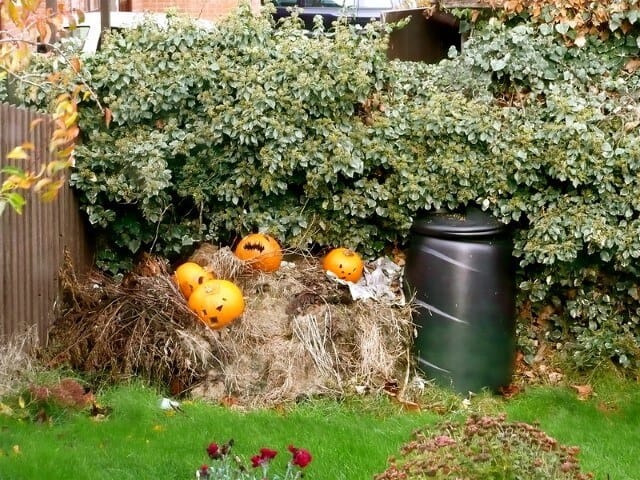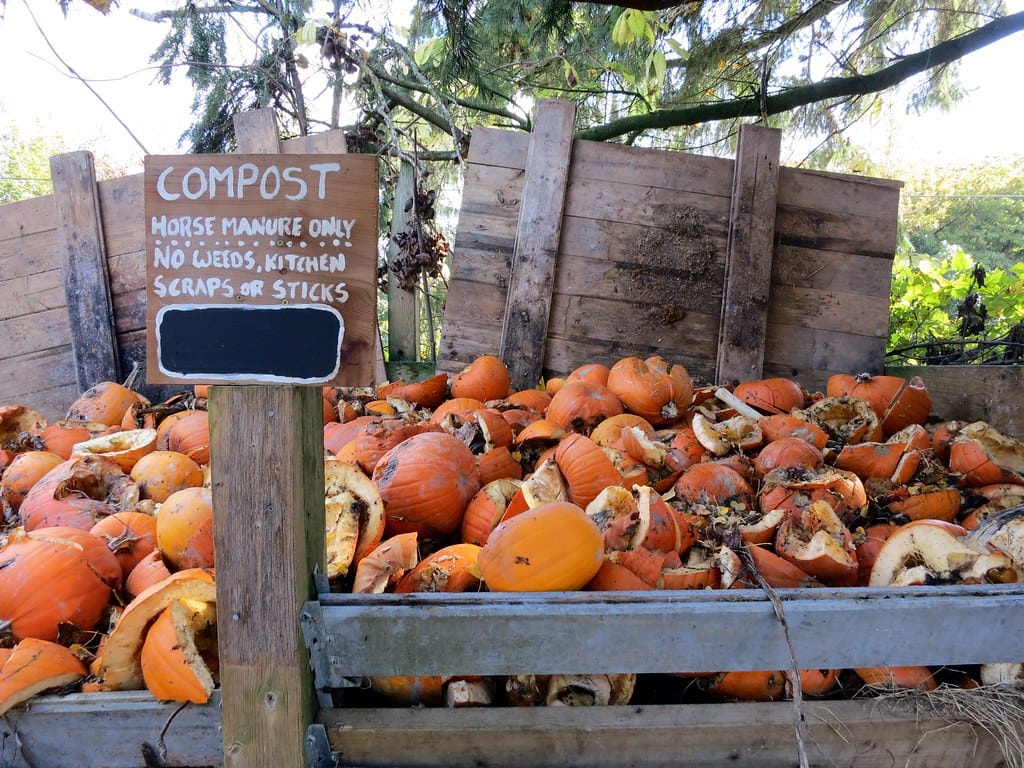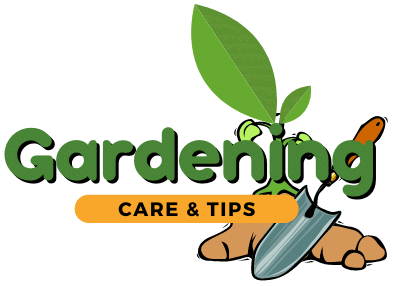GCT is reader-supported. When you buy via links on our site, we may earn an affiliate commission at no cost to you. Learn more.
Can You Compost Decorative Pumpkins And Gourds?
Publish Data: August 21, 2021
Do you want to turn the decorative pumpkins and gourds of your house into compost? While most people consider this a hassle, it is a very rewarding process. Every year our family uses food items like this for decoration purposes which we convert into compost after using them.
That is how I gained more experience in composting. So, in this article, I will provide you with details about how you can convert the pumpkins and gourds into compost.

Why Should You Compost Decorative Pumpkins and Gourds?
Halloween is a well-decorated season just like Christmas, so you must have enjoyed those nights decorating your house. After a great party, you will find plenty of compostable late autumn and Halloween decorations from your house. Of course, the pumpkin is one of the most vital decorations for Halloween.
But what should you do after it has served decorative purposes? Rather than throwing those decorative foods away for trash pick-up, you can convert them into compost to use later.
You will find a huge number of carved pumpkins if you go to any Pumpkin Carving Competition. After the ceremony is over, it becomes a matter of concern about what to do with this huge number of pumpkins.
The professionals do not throw them away. Rather, they donate or sell them to nearby gardeners or compost farmers. As a result, the environment stays clean, and the soil is also benefited.
If you have flowers or fruits in your garden, compost will very much help to keep their soil fertile and productive every season. Adding compost will improve the soil structure and add vital nutrients to it.
You can convert most fall decorations into compost, for example, straw bales, gourds, discarded pumpkins, leaves, etc. You can even take help from your neighbors and create a common compost file for all families.
How to Know That the Compost Is Ready?
The answer to this question depends on what method you adopt for composting the pumpkins and gourds. Most methods of composting will take from a few months up to a full year to provide you with the finished compost. If you adopt the pit or trench method, decomposition may occur even faster.
But remember that earthworms will always accelerate the decomposition rate, so you will get finished compost a lot faster in a wormery.
Your local weather and climate also play a role in composting. Warmer weather will allow quicker decomposition, whereas cooler weather tends to slow the process down.
Check the compost carefully and take a look at its contents. If you find all the green and brown materials completely broken down into rich dark soil, then the process is mostly completed.
This is your finished compost that you can now use for your gardening purposes.

Methods of Pumpkin and Gourd Composting and How to Apply Them
Composting in a Bin
If the gourds and pumpkins are larger in size, at first you need to smash them down into smaller pieces to put inside a bin.
Remove any parts containing harmful chemicals and then add the remaining into the compost bin. This kind of food waste is considered green material for your compost.

So, it is very rich in nitrogen content. You can also add brown material to it such as cardboard, dried coffee grounds, shredded paper, dry leaves, etc.
This will help the spread of odor that may attract unwanted pests and flies.
Composting in a Wormery
You can set up a wormery in your house to get worm casts and liquid fertilizer from the earthworms. You can chop the remains of pumpkins and gourds into smaller pieces to add them inside the wormery.
It is not necessary for you to use fresh gourds and pumpkins for composting, you can even use the rotting ones. Do not smash the rotting pumpkins, it will make a big mess and the worms will not be able to move properly inside the wormery.
So, make sure to cut those rotting pumpkins into small segments and then add them when necessary.
Do not add pieces of food now and then, because it is not good if you overfeed the worms. Also, do not add a large amount of food at a single time. To prevent the worms from getting overfed, you can store the pumpkins in a fridge to use later.
In this way, you can control the food consumption of your worms and use them for a long time.
Pit or Trench Composting
You will find this method very simple to convert the carved pumpkins into compost. First, try to find a sunny spot in your garden that does not get much shade. Then use a spade or shovel to dig out a pumpkin size grave.
At the bottom, make a bed of compostable materials like vegetable peelings, food scraps, fallen autumn leaves, etc. On top of the bed put a pumpkin and smash it into small pieces.
Finally, cover always with dry compostable materials like leaves, sawdust, and wood chips.

In case you have a larger number of pumpkins or gourds from a carving competition, it will be better for you to dig a trench rather than pits.
In this way, you can convert more food waste into compost within a short period.
Bokashi Bin Composting
You can use the Bokashi kitchen composter for food wastes like gourds and pumpkins. You can put any kind of raw or cooked meat scraps, and leftovers of vegetables and fruits.
For wastes like pumpkin, you need to smash them into tiny pieces so that there are no air pockets when added inside the bin. You should replace the lid after each time you add food materials.
Once the Bokashi bin is full, close the lead tightly making it airtight.
Then leave the container for up to 14 days for decomposition. Continue to drain the excess liquid daily. Depending on the size of the bin, it generally takes one or two medium-size pumpkins to fill it up properly.
Things You Should Keep in Mind on Compost Decorative Pumpkins and Gourds

Certain municipalities don’t allow bigger food scraps, yard waste, or pumpkins to pick up. In that case, be mentally prepared to start converting those items into compost. Be sure to contact your municipality to find out what sort of clippings they allow.
If you don’t want to convert them into compost, then you can try practicing consuming those decorative pumpkins or gourds. You do this to make sure not to use any harmful chemicals or paints on them.
Simply cut them for decorations so that you can consume them later. For consumption purposes, cook them properly before eating.
If you have decorative foods that contain excess paints, candles, wax, and other chemicals, you must not add them to the compost pile.
Because, if the earthworms feed on them, they will die instantly, and the decomposition process will stop. So, always check the contents properly first before adding.
Rather than buying gourds and pumpkins from local stores, you may find them at cheap prices from your neighbors. Keep in touch with them so that they sell you any decorative food items for later consumption. You can get baking pumpkins, pie pumpkins, and sugar pumpkins from them.
These are the best ones for cooking purposes. But inform them not to send any food items that are painted. This will also help your neighbors to get rid of those items too.
Do not throw away decorative pumpkins and gourds in public places, especially the ones that are painted and contain chemicals. Because if any stray animals consume them, the toxic chemicals will harm their body.
Final Words
You will find some people around you who might advise you to throw those pumpkins and gourds away after using them. Always remember that you can generate a lot of compost decorative pumpkins and gourds.
After using the finished compost in your garden, you can even sell the surplus to your neighbors. That is why we highly recommend you not to throw away those food materials and use them for your purposes.
Happy composting!
